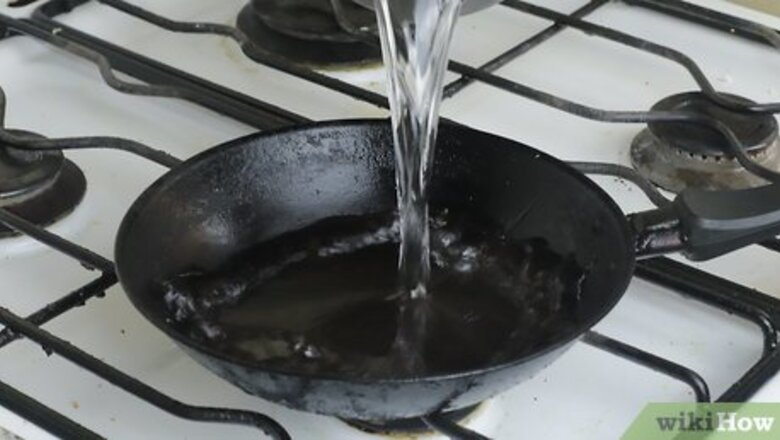
views
X
Expert Source
James SearsHouse Cleaning Professional
Expert Interview. 28 August 2019.
With proper care, your cast iron skillet will improve with age and use, becoming a beautiful centerpiece of your cooking and, indeed, your kitchen.
Cleaning Your Skillet the Traditional Way
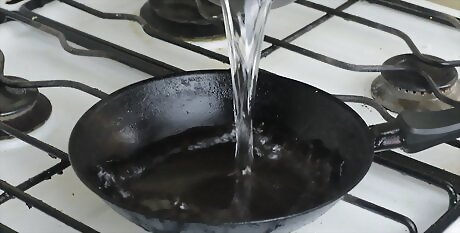
Rinse the skillet out with hot water after cooking. If your skillet is still hot, this is the best time to clean it. If your skillet has a distinct "lip" so that it holds water, you can pour water directly onto the hot pan--something you should not do with other kinds of cookware. It will hiss and steam dramatically, but this is fine. Take care not to get too close to the hot steam lest you risk a burn. Rinse it out once to remove many of the large pieces of food. Then fill it again so that the water fills the cooked on area.The exact amount is not important.
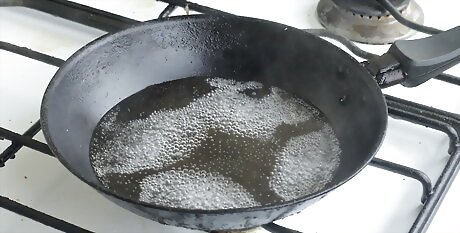
Bring the water to boil. If your skillet still needs cleaning, or is cold, you can heat the pan up again. Carefully place the cast iron skillet back on the burner and heat the water up until it reaches a boiling point. Boil the water for several minutes to help dissolve food scraps.
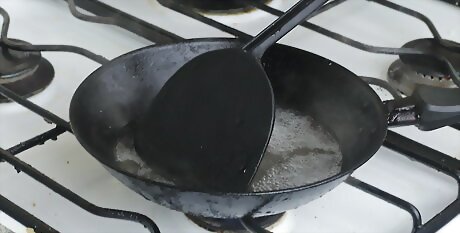
With a wide spatula, lightly scrape the bottom and sides of the pan to dislodge any remaining food scraps. Do this while the water is still boiling, but only briefly and gently. Too much contact with metal objects risks stripping the pan's seasoning.
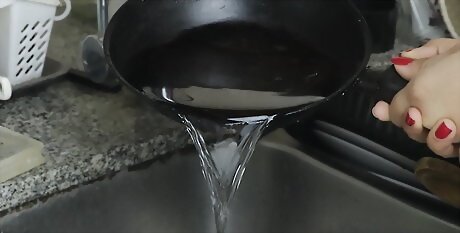
Dump the dirty water in the sink. Return the cast iron skillet to the burner and turn the burner off. Use caution when transporting the skillet back and forth between the range and the sink. Because cast iron is an excellent conductor of heat, the handle, as well as all other portions of the skillet, will be extremely hot. Use a cloth or oven mitts to transport the skillet.
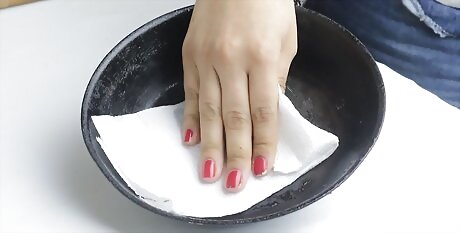
Wet a couple paper towels and quickly wipe the surface of the skillet. If done correctly, the bottom of your paper towel should contain a dark layer of residue.
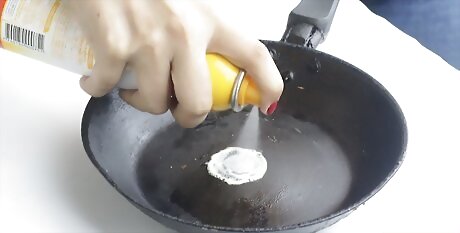
Apply a thin coating of fat, such as vegetable oil or shortening, to the surface of the skillet. Vegetable sprays work especially well for this purpose. Apply or spray a dab of fat into the bottom of the pan; with a paper towel, wipe the fat into the bottom and the sides of the pan. This process should turn the pan's surface into a smooth, glossy finish.
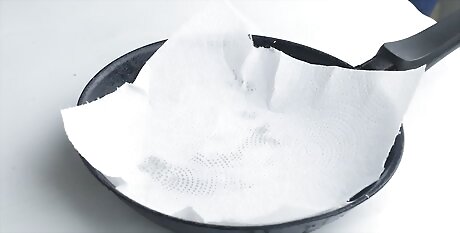
Store in a cool, dry place. Cover with a paper towel instead of a lid to prevent moisture from building up inside the pan.
Cleaning with Potatoes and Baking Soda
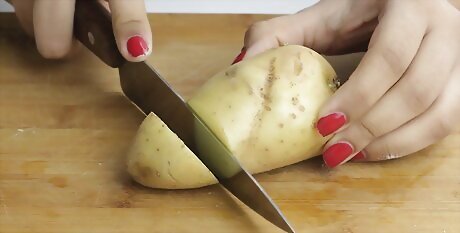
Cut a raw potato in half or lengthwise, depending on the size of your skillet. Larger skillets may require you to cut the potato lengthwise for more surface area. This method of cleaning your cast iron pots and pans works great for tackling rust.
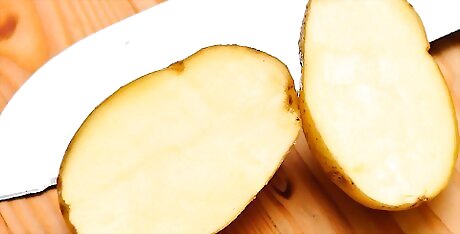
Apply a thin layer of baking soda to the bottom of your potato. The baking soda is both a slight abrasive and a light but effective cleaner. Baking soda is renowned as a natural cleaning ingredient.
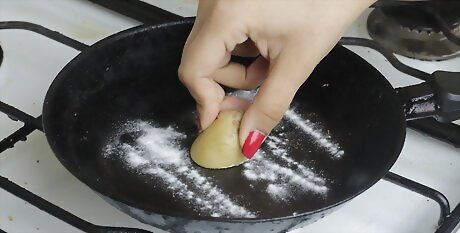
Scrub the skillet with the potato and baking soda, taking extra care to clean the problem areas. Scrub the bottom of the pan, as well, as the sides. If the potato gets too slick, simply cut a slice off of it and apply another coating of baking soda.
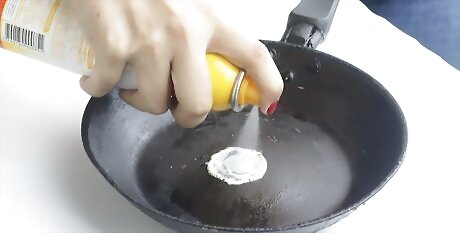
Season your pan after cleaning. You'll probably need to re-season your pan after cleaning it with a potato and baking soda.
Methods That Do Not Help Clean a Cast Iron Skillet
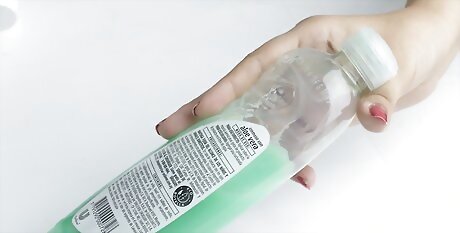
Avoid using soaps and detergents. Soaps and detergents are great at cleaning most cookery, but they should be avoided when it comes to cast iron pots and pans. The sulfides in most detergents bind to the oils in the skillet and strip them, leaving your skillet as naked and vulnerable as it was on the first day of its life. It still can be re-seasoned, but it ends up being more work than necessary.
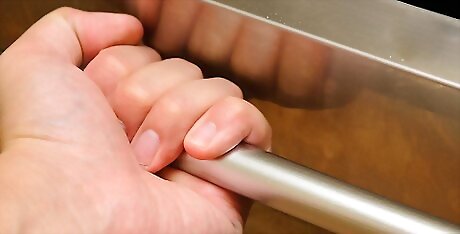
Never put the skillet in the dishwasher. Different process, but same reasons. This process can eat through the non-stick coating you've created and promote rust.
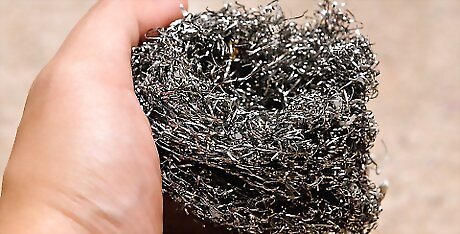
Try to avoid using steel wool to clean your cast iron cookery unless in dire need of cleaning. While steel wool is effective at removing food and other buildup, it cuts right through the seasoning and forces you to start at square one again. Far better to stick to the potato method for cleaning (no pun intended).

















Comments
0 comment